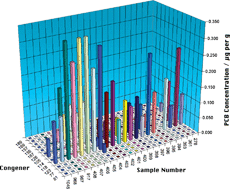Challenges in the application of conventional PCB quantitation methods to studies of ‘invasive’ freshwater organisms
Abstract
We describe significant and unexpected errors in application of a conventional method for the quantitative determination of polychlorinated


 Please wait while we load your content...
Please wait while we load your content...